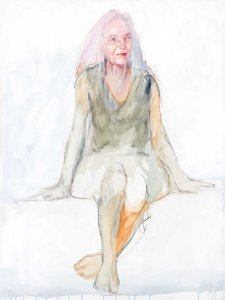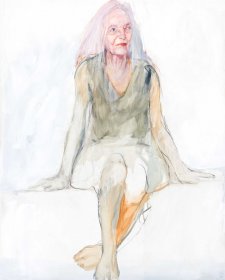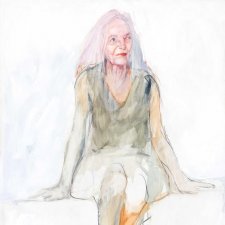- About us
- Support the Gallery
- Venue hire
- Publications
- Research library
- Organisation chart
- Employment
- Contact us
- Make a booking
- Onsite programs
- Online programs
- School visit information
- Learning resources
- Little Darlings
- Professional learning
Sir Frederick Darley GCMG (1830–1910), chief justice and lieutenant governor, was educated at Trinity College, Dublin, and called to the Bar at the King’s Inns in 1853. He worked in London, where he was also admitted, before returning to the Munster circuit, but decided to emigrate and left from Plymouth with his wife, Lucy, in 1862. He was admitted to the colonial Bar soon after arrival. In 1868 he was nominated to the Legislative Council by Sir James Martin, who admired his drive. After eleven years’ hard work he took silk in 1878. Following Martin’s death and the resignation of his successor, fifth chief justice Emanuel Salomons, after just a fortnight in the job, in 1886 Darley became sixth chief justice of New South Wales – with some reluctance, as it entailed a reduction in his income. He was knighted in 1887; he became lieutenant governor in 1891; further honours followed in 1897 and 1901. Following life-threatening surgery in 1901 he returned to England, where he recovered sufficiently to serve on the royal commission into the South African war. He came back to Sydney in 1903 and resumed his seat on the bench; having retired to England in 1909, he was interred the following year in the family plot in Ireland. The holiday house he built in the Blue Mountains, Lilianfels, is now the nucleus of a luxurious resort.
Collection: National Portrait Gallery
Purchased with funds provided by L Gordon Darling AC CMG 2009
L Gordon Darling AC CMG (38 portraits supported)



On one level The Companion talks about the most famous and frontline Australians, but on another it tells us about ourselves.



The Darling Prize is a new biennial prize for Australian portrait painters, painting Australian sitters. The winner receives a cash prize of $75,000.



This exhibition showcases portraits acquired through the generosity of the National Portrait Gallery’s Founding Patrons, L Gordon Darling AC CMG and Marilyn Darling AC.